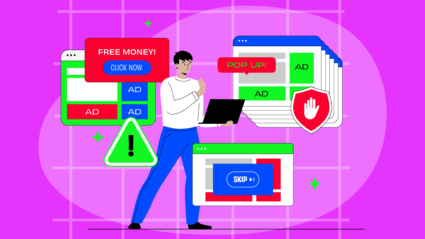In a world of cookie deprecation, your email marketing strategy is the key to unlocking first-party, consent-driven data that can help you facilitate more meaningful, engaging, and personalized customer experiences across the entire funnel.
Email will continue to rise in importance as a unique identifier that enables targeted advertising in other channels, especially across paid media. But too many brands silo email from the rest of their marketing, focusing on acquisition and failing to integrate email fully into their marketing as a whole.
But your email marketing needs to work seamlessly with your other channels—from efforts to capture email addresses to personalized campaigns and initiatives that truly earn a spot in your customer’s inbox, keep them engaged and informed, and touch every stage of the funnel.
Proven tactics for successful email and paid media integration
Marketers cannot unlock the true power of email marketing if they’re not actively testing all the time. These tests can range from something as basic as A/B testing subject lines and comparing calls to action to multivariable testing across several cohorts.
But testing isn’t just about delivering better email results; it’s about leveraging those lessons across multiple channels to drive full funnel growth.
Brands need to not just integrate data and insights not only from their paid media channels into their email program, but also from their email program back out to other areas of their marketing. There are six tactics you should consider implementing to bring your channels closer together:
- Identify high-value customers: By opening up the door to first-party data, email helps marketers directly identify and engage their highest-value customers in a way that paid media alone cannot. This includes consumers who have recently joined an email list, purchased a specific product, or become active in your brand’s email program and/or on your website. The acquisition of email addresses also enables marketers to create lookalike audiences across paid media from existing customer data. On the other hand, you can collect emails directly from paid media efforts and measure impact through metrics like view-to-completion rates or on-site engagements post-click.
- Segment cross-platform audiences: Utilize the segmentation tool in your ESP to choose specific people to target on both paid search and social. By engaging with your high-value audiences and aligning your campaigns on as many channels as possible, you can boost your brand presence and unlock greater efficiency across the funnel.
- Use Facebook lead ads: Utilize lead ads on Facebook to drive more email signups, then amplify the user experience with customized welcome emails based on the source.
- Exclude specific lists: To improve the efficacy of your ad spend, determine if there are any users that can be excluded from your campaign targeting list. The reason for exclusion largely depends on your remarketing strategy; some users may have purchased in a timeframe or could be targeted for a future sale, making them excusable from receiving certain ads. It’s important to note that this data lives in your CRM and should be continuously updated, optimized, and informed by your email marketing efforts.
- Optimize website experiences: If an email user comes through via paid search or social, give them a special promo based on that experience via a targeted pop-up. Users who sign up on particular pages of a site can also be sent customized welcome or informational messaging.
- Integrate product feeds: Integrate product feeds from your website to your ESP based on what is performing well within your marketing efforts. Email users are likely to respond better to similar products in marketing campaigns, and their information may be faster to come by than through an email test.
- Incentivize product reviews: Use email to incentivize your customers to submit product reviews (and ramp up social sharing) in order to build user-generated content (UGC) for paid ads. Brands can do this by offering a discount, rewards points, or a small thank you gift.
What does a powerful email marketing strategy look like in 2021?
Creating a strong, holistic email strategy is a fine balancing act; you need to know how to prioritize the impactful email tactics that support growing your list with quality contacts while developing a deeper understanding of your email segments and which messaging works best to engage and/or get your customers to convert.
A good place to start is by making sure you have clear goals, processes, and tools in place. Consider these key questions as you start building out your strategy:
- What are your goals for email marketing?
- How are you going to achieve those goals?
- What metrics do you want to track?
- Will you use features like mobile-friendly templates, A/B testing, dynamic content, and others?
- How will you integrate email with other critical touchpoints like SMS or live chat?
- How will you use email to hone in on your first-party data strategy?
- How will you leverage that first-party data to power other areas of marketing, such as your paid media channels?
In a time of nonstop offers to unlock discounts in exchange for email addresses and overstuffed inboxes, brands need to put more emphasis on quality and intentionality—not just quantity. There are three pivotal ways to rethink the “why” behind your email marketing strategy that will help you make the move towards true personalization while generating full funnel ROI results:
- Establish credibility and trust: Gaining entrance to someone’s inbox is a privilege, and brands need to be more thoughtful and responsible about what they’re sending to their audience. Email gives marketers a dedicated platform to facilitate one-to-one personalization, create a true value exchange, and establish trust with customers throughout their purchase journey. Use it wisely.
- Develop brand advocates: That access represents an opportunity to turn subscribers into top customers and brand advocates through genuine, engagement-driven tactics that help drive long-lasting relationships and customer lifetime value (CLV). If you’re looking no further than the next sale, you’re not taking full advantage of email.
- Boost incremental value: Brands must optimize their paid media strategy according to insights learned from email (and vice-versa), including what content/messaging the consumer is responding to. These insights can help you supercharge your entire marketing mix to drive incremental traffic and revenue while ensuring a stronger ROI.
Unlocking the full potential of your email program and truly making it a part of your larger strategy starts with the right tech.
How to choose the best email service provider (ESP) for your business
Your email strategy needs to be built out of a solid tech stack with a mature email service provider (ESP) at the base that allows your brand to maximize its integrated efforts.
You can’t get this functionality without investing in a tool dedicated to email marketing: one that builds experiences across email, owned, and paid media channels, and measures the results in revenue—not just opens or clicks. When choosing the right email solution for your business, consider the questions you just asked about your strategy: aligning platform benefits with your business goals and objectives is key.
Rank the email functions that are most important
You’ll want to make sure your email provider offers effective, easy-to-use features that you can always rely on. Here are a few that we think are vital to marketing success:
- Automation: It’s important to send the most relevant messages to the right people at the right time. Make sure your email service provider offers seamless workflows to help you schedule and send automated messages with ease.
- Mobility: Email opens on desktop don’t necessarily always translate to conversions on mobile devices. To avoid this falloff, brands need to design their emails and customer experience with a seamless user flow going from the email itself to the call to action across all devices. We recommend using a marketing platform like Justuno, which allows email capture on mobile sites to maximize signup rates through features that are fully customizable and testable.
- Integration: By integrating your email and paid media channels, data is made automatically available to help you segment your lists, add dynamic content to emails, trigger automated email campaigns to your audience—and ultimately drive a more seamless, customer-first experience. If you’re looking to leverage insights from email to inform your paid strategy and drive full funnel growth, we suggest partnering with an email service provider like Klaviyo, which gives marketers the flexibility to create direct integrations with just about anything that exports data.
Your email strategy must become a more central part of your marketing as data privacy regulations change and strong first-party data becomes a key competitive advantage for your business. That un-siloing process needs to happen right now, or you risk being left behind.







Responses